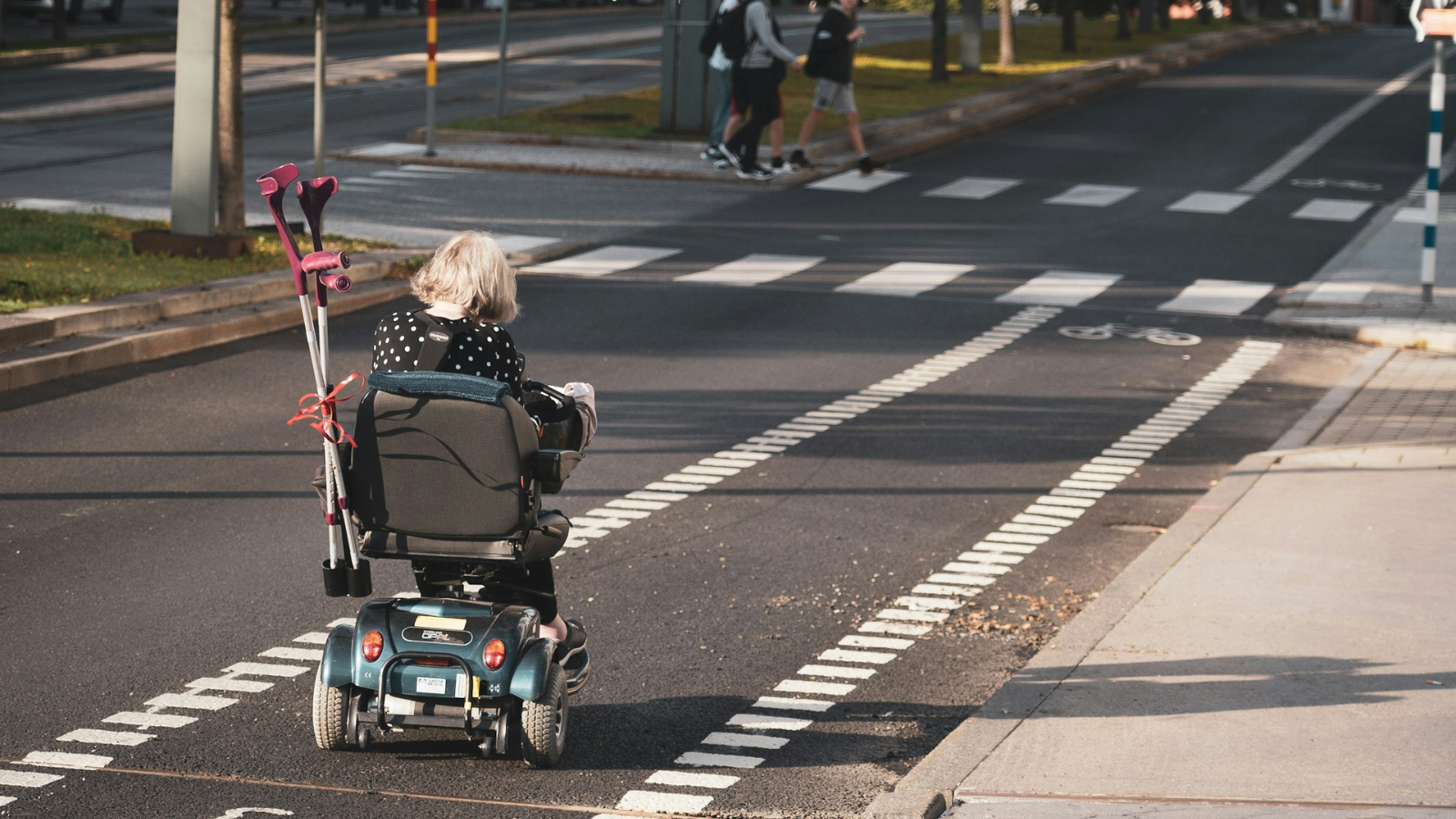A new survey created in collaboration with Smart Growth America, the International Parking & Mobility Institute, and the Disability Rights Education & Defense Fund aims to collect the experiences of people with disabilities navigating our streets. This information will contribute to best practice guidelines illustrated in our upcoming Accessible Streetscapes Design Guide. The survey will remain open through June 7. Click here to take the survey.

From the parking meter and beyond: The origins of the Accessible Streetscapes Design Guide
In 2018, Transportation for America’s Policy Director, Benito Pérez, help launched the District’s Department of Transportation Red Top Meter Program while working as Curbside Operations Manager with DDOT. Through the program, the department implemented parking meters with distinct red tops along curbside parking spaces with accessible access to the sidewalk. These meters reserve parking spaces for persons with disabilities and allow additional parking time. While programs such as the Red Top Meter Program can help to improve accessible access to the sidewalk, Pérez noticed a need for transportation practitioners to consider the accessibility of the entire streetscape. Projects that improve access to the curb can only be meaningful when the streetscape itself is accessible to all people, including people with disabilities.
What is the Accessible Streetscapes Design Guide?
Smart Growth America is collaborating with the International Parking & Mobility Institute, the Accessible Parking Coalition, and the Disability Rights Education & Defense Fund to create a first-of-its-kind resource: an Accessible Streetscapes Design Guide. The purpose of this design guide is to compile recommendations and best practices to improve accessibility across the entire streetscape, including parks, plazas, sidewalks, intersections, and more.
This guide further seeks to include considerations for a wide range of physical and cognitive abilities that historically have not been represented in legislation. Thirty-three years ago, the Americans with Disabilities Act (ADA) was passed, marking a notable milestone in the history of federal civil rights legislation for people with disabilities. The passage of this landmark legislation is cause for celebration, but at the heart of disability advocacy lies the consensus that the ADA was always meant to be a starting point, not the end game. Just last year, the Public Right-of-Way Accessibility Guidelines (PROWAG) was published by the U.S. Access Board in an effort to address the public right-of-way accessibility requirements left out of the ADA. These two examples of legislation illustrate meaningful steps towards more accessible spaces, yet ADA is limited in scope, PROWAG is limited in enforcement, and both are limited in their inclusion of persons with cognitive disabilities.
The forthcoming design guide hopes to provide a starter resource that can support practitioners as they implement policies and projects to design a streetscape that serves all who use it.
The Accessible Streetscapes Design Guide Survey
To create a design guide that reflects the needs of those who experience the challenges of navigating an inaccessible world, we developed a survey for streetscape users with disabilities in collaboration with the International Parking & Mobility Institute and the Disability Rights Education & Defense Fund. The responses to this questionnaire are essential to designing recommendations that improve access for that community and will be at the core of the Accessible Streetscapes Design Guide.
On April 10, Smart Growth America, the International Parking & Mobility Institute, and the Disability Rights Education & Defense Fund opened the Accessible Streetscapes Design Survey, with distribution continuing until June 7.
With feedback collected from this survey, Smart Growth America and its partners will enhance the Accessible Streetscapes Design Guide with firsthand user feedback. To create a more equitable and accessible future, the perspectives of those most affected by our current system and its future changes must be included in all decision-making processes, from design to implementation.
If you identify as a member of the disability community, we would appreciate your contribution to the survey at this link.
If you are an organization, government entity, or just interested in distributing this survey, please reach out to us using this form.